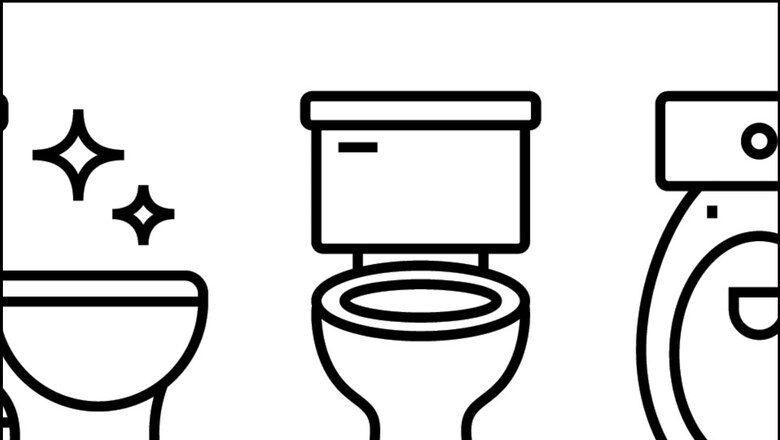
views
Let’s talk about toilets. Not the fancy, marble-clad ones you see in posh hotels, but the kind that millions of people in India’s urban slums have to deal with. The ones that are shared, overflowing and poorly maintained. We know why this happens: when it is always someone else’s responsibility, it translates into no one’s responsibility. Moreover, cultural and economic factors also play a part. For many users, toilets are new. They don’t know how to use them correctly, and are too ashamed to ask.
Not pleasant, is it?
This, however, is the daily struggle of the thousands of families in our cities, who are often the workforce that make the shiny veneer of the cities look so shiny. Toiling beneath our towering buildings and bustling markets, these families struggle with basic necessities like clean and safe toilets. This lack of proper sanitation is a potential health hazard, often spreading diseases and creating a dirty environment. For women and girls in particular, this lack of safety and privacy can create additional barriers to education, jobs and economic independence.
According to the 2011 census, there are about 65.5 million people living in urban slums in India, which is about 17% of the urban population. These slums are characterized by overcrowding, lack of basic infrastructure, and inadequate public services. One of the most pressing issues faced by the slum dwellers is the lack of proper toilet facilities.
The residents have to deal with long queues, broken doors, foul smell, flies, and rodents. Moreover, many toilets are not connected to proper sewage systems or treatment plants, resulting in contamination of water sources and soil. This leads to various health problems such as diarrhea, cholera, typhoid, and worm infections.
The Need for Innovative Solutions
The conventional toilet models that rely on water flushing and sewerage networks may not be feasible or affordable for most urban slum areas. Therefore, there is a need for innovative solutions that can address these specific challenges and needs. Some of the key considerations are:
- Urban slums have high population density, which means that there is a high demand for toilets and a limited space to install them. Therefore, toilets need to be compact, modular, and easy to install and relocate.
- Urban slums are home to diverse groups of people with different cultural and religious beliefs, preferences, and habits regarding toilet usage. For example, some people may prefer squatting over sitting, or using water over paper for cleaning. Therefore, toilets need to be adaptable and user-friendly for different segments of the population.
- Urban slums face a high risk of disease outbreaks due to poor sanitation conditions. Therefore, toilets need to be hygienic and prevent the spread of pathogens. This means that they should have features such as self-cleaning mechanisms, ventilation systems, waste separation systems, and disinfection systems.
That may seem like a tall order, but there are several people thinking through these problems today. Already, several designs fit the bill.
The Eco-Vapour toilet, developed by WaterAid India and its partners uses plastic drums lined with a membrane sack to collect and store human waste. The membrane allows water vapour to escape, reducing the volume and odour of the waste. The drums can be easily replaced when full and transported to a safe disposal site. The Eco-Vapour toilet is cheap, easy to install and maintain, and does not require water or electricity.
Another innovative design is the bamboo toilet, designed by the Delhi Urban Art Commission (DUAC). This toilet is made of bamboo poles and panels, which are renewable, biodegradable and locally available. The bamboo toilet has a simple pit latrine with a ventilation pipe to reduce smell. The toilet also has a roof, a door and a window to provide privacy and natural light. The bamboo toilet is eco-friendly, easy to build and adaptable to different locations and contexts.
Then there is the bio-toilet, which uses bacteria to decompose human waste into water and biogas. The bio-toilet consists of a toilet seat connected to a bio-digester tank, where the waste is treated by anaerobic bacteria. The water can be reused for flushing or gardening, and the biogas can be used for cooking or lighting. The bio-toilet does not need sewerage or septic tanks, and produces no sludge or smell.
Tiger Toilet is another low-cost bio-toilet that uses earthworms to decompose human waste into organic fertilizer. It consists of a squatting pan connected to a chamber filled with earthworms and organic matter such as coconut husk or sawdust. The earthworms feed on the waste and produce vermicompost, which can be used as a soil conditioner or sold as a source of income. The liquid waste is filtered through a layer of sand and charcoal and drained out as harmless water.
The Larger Sanitation Ecosystem
Change doesn’t happen in a vacuum. Affected communities need to be involved, sponsors and funds found, decision makers need to be convinced, the project needs to be managed and vendors need to be paid. Even when the technologies exist, the road to implementation on the ground is a long one.
But it starts from creating awareness. That is something that Harpic, India’s leading brand in the lavatory care segment, knows much about. For decades now, Harpic has vocally championed the cause of toilet hygiene through innovative and thought provoking campaigns and outreach programs. Harpic, together with News18, also created the Mission Swachhta aur Paani initiative 3 years ago. It is a movement that upholds the cause of inclusive sanitation where everyone has access to clean toilets. Mission Swachhta aur Paani advocates equality for all genders, abilities, castes and classes and strongly believes that clean toilets are a shared responsibility.
Mission Swachhta aur Paani also combines intelligent dialogue between the right stakeholders, ie. government officials, NGOs, activists, sanitation workers, educators and members of the public, with the audience reach News18 brings. It has brought to light many problems our sanitation infrastructure, and sanitation workers face. It also invites you to engage with this knowledge, and help move the conversation forward.
This is a problem for all of us. Our cities are held in place by the labour of those who live in our slums. If the conversations we have today can make their lives easier, how can we not talk about toilets? Join us here, to add your voice to a growing call to action, and help us usher in Swasth and Swachh Bharat for us all.
















Comments
0 comment